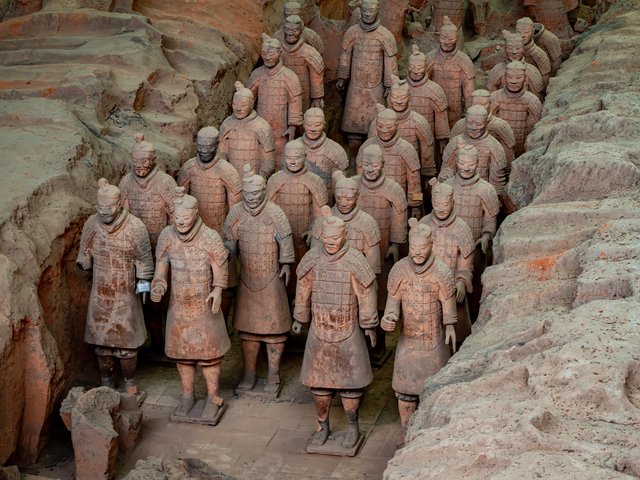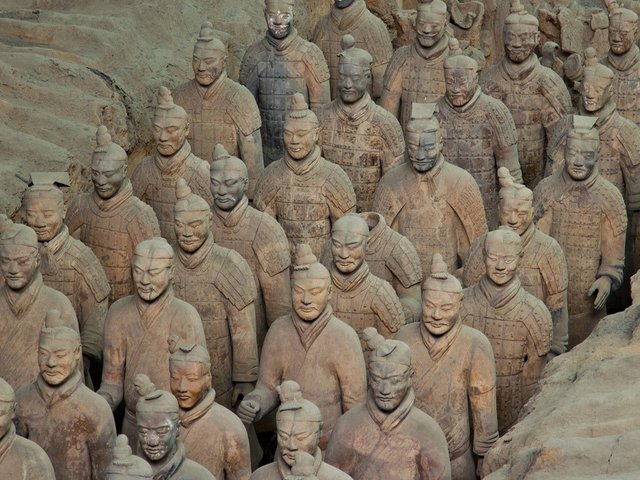The estimated $600,000 fee paid by the British Museum for the terracotta warriors show will go to the Shaanxi Province Cultural Relics Bureau, which will pass on a proportion to the Xi’an Museum of the Terracotta Warriors. Museum director Wu Yongqi told The Art Newspaper of ambitious plans to expand the area accessible to visitors beyond the main warriors’ pit, which is open to the public. Visitor numbers for the warriors’ pit are expected to rise to 3m this year, a huge number for a provincial site.
The plan is to open three other areas to visitors—the birds’ and musicians’ pit, the stone armour pit and the chariots’ pit. The cost of this development, with associated works, will be 1 billion yuan (around £66m). It will also necessitate moving the homes of 2,000 people who currently live above the site.
Meanwhile archaeological work continues. So far only 1,900 of the estimated 7,000 warriors have been excavated, following the discovery of the site in 1974. However, there are no plans to excavate the tomb mound which is believed to contain the remains of the first emperor, Qin Shihuangdi. It is difficult to imagine that European archaeologists or governments would manifest the same restrained approach towards a find which is described by curator Jane Portal as “arguably the most famous archaeological site in the world”.
Jiao Nanfeng, director of the Shaanxi Archaeology Institute, told us that China now has a law prohibiting the excavating of the graves of emperors. Mr Wu explained: “We should respect our ancestors and our cultural heritage, and any measures we take should not damage the physical remains of either relics or sites.”
Even after the high costs (including temporary conversion of the reading room) and fee to the Chinese, the show should still generate a significant profit for the British Museum.
Originally appeared in The Art Newspaper as 'Exhibition fees to fund expansion of warriors’ site'



